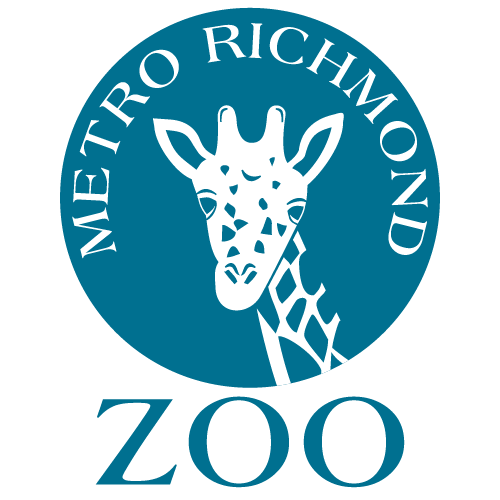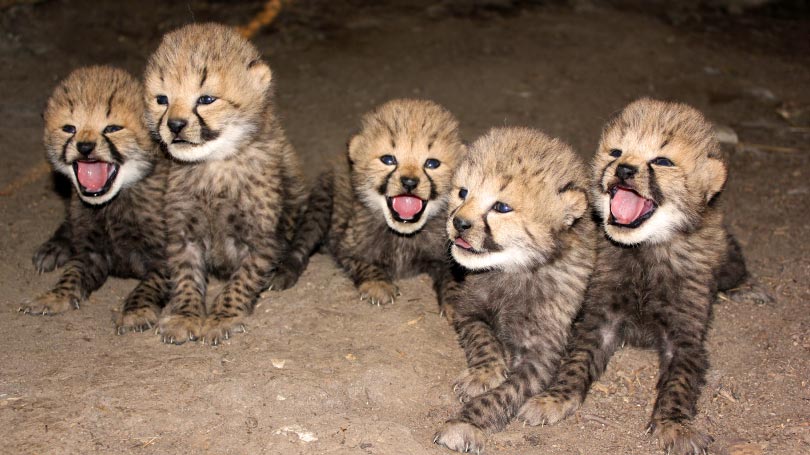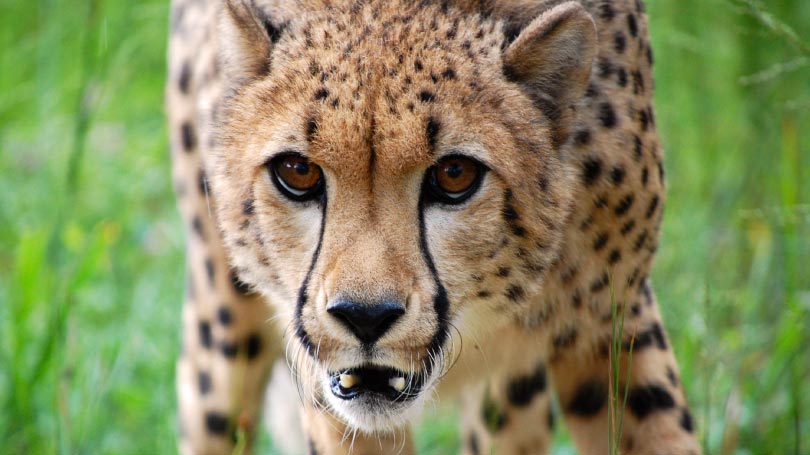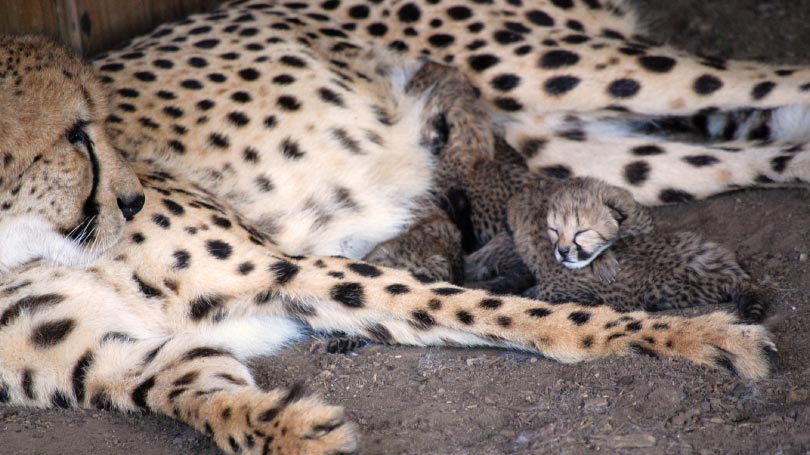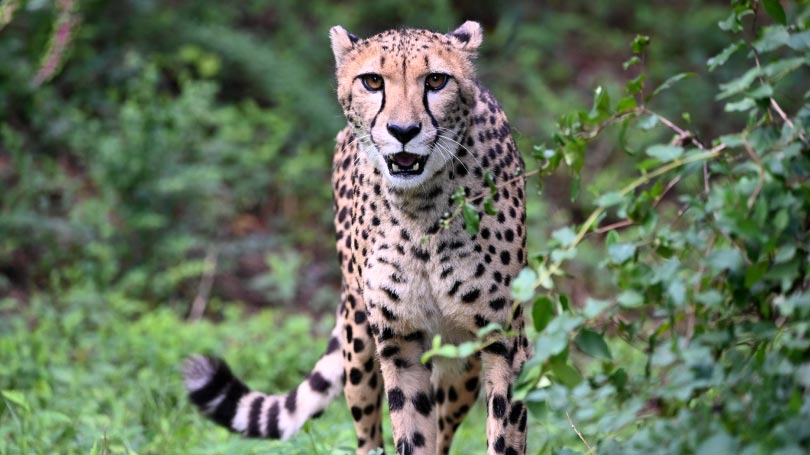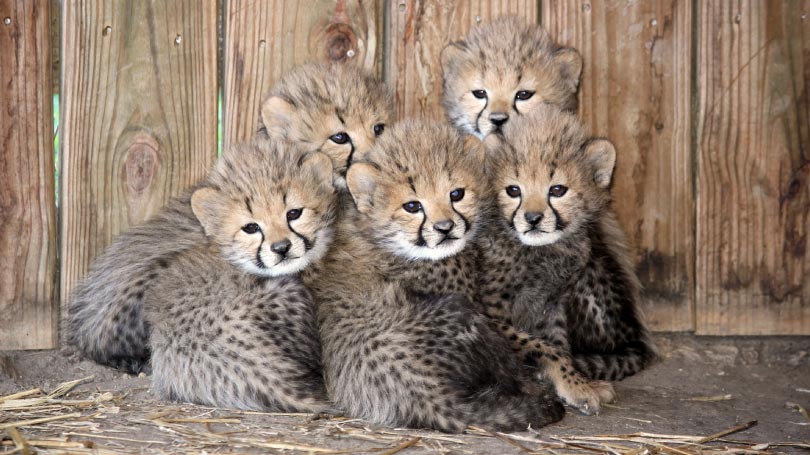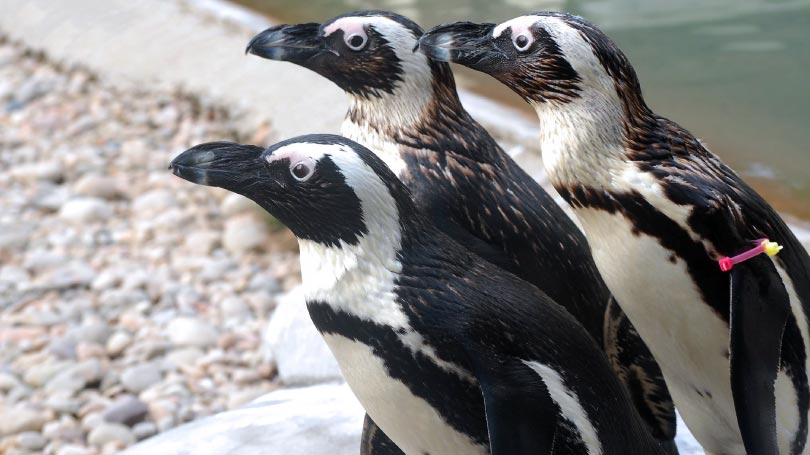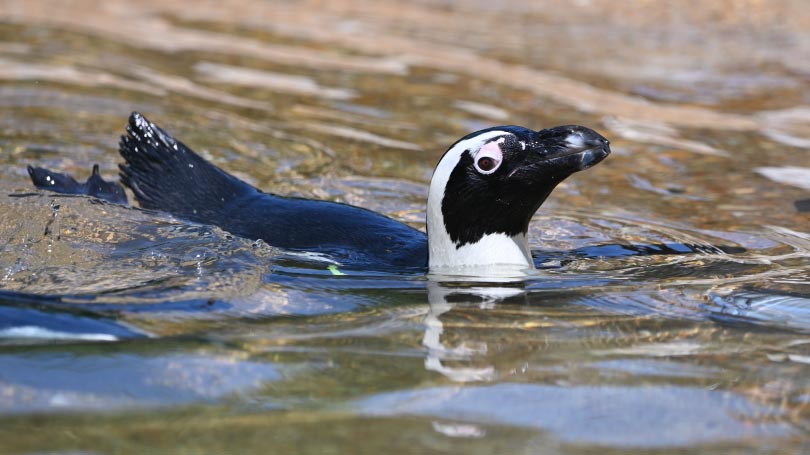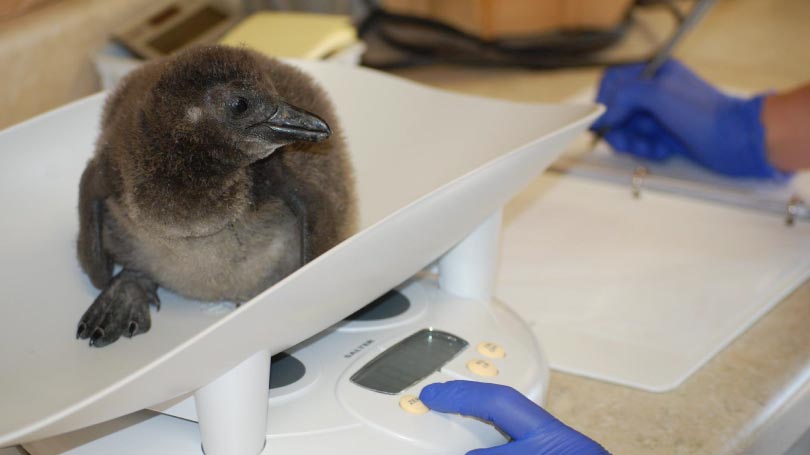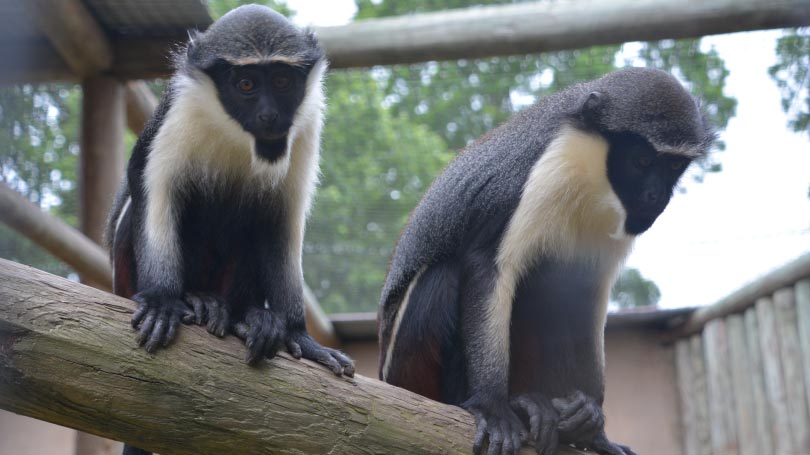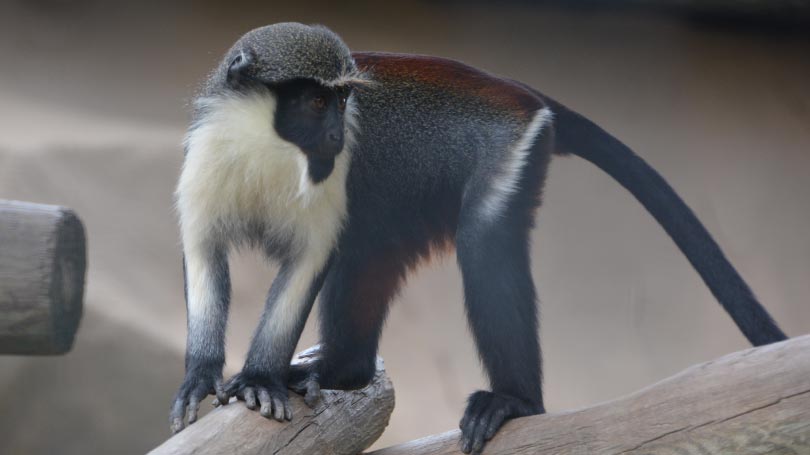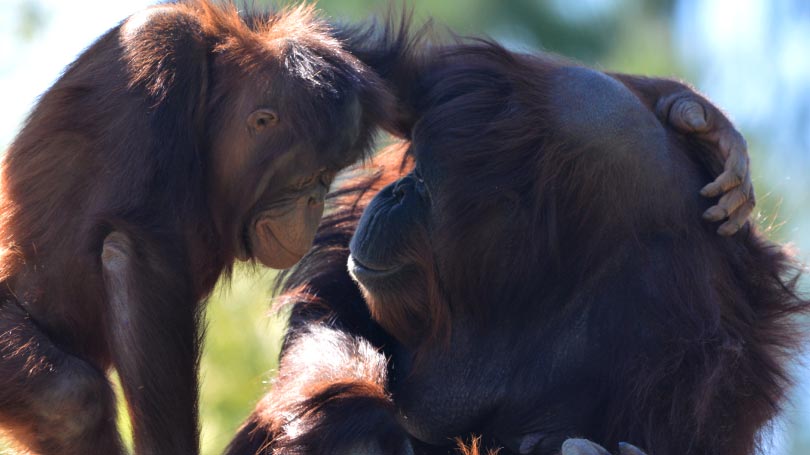Animal Conservation
Come and Protect
Wildlife Near and FarConservation is an essential pillar of our mission, and we are proud to support conservation efforts around the globe.
Our Conservation Programs
Cheetah
Penguin
Diana Monkey
More
OUR MISSION
Protect and Inspire
Our mission is to protect animals through conservation and inspire guests by providing up-close, educational encounters with the wild.
What is animal conservation?
Animal conservation is the act of protecting animal species and their habitats for generations to come. The Metro Richmond Zoo strives to be a leader in animal conservation.
Many animal populations are dwindling due to human poaching, habitat destruction, disease, and other factors. Through zoo reproduction programs and conservation efforts, animal species can be preserved.
The Zoological Association of America (ZAA) explains:
For many (animals), the “wild” is disappearing as humans encroach on their natural habitats. To ensure a species’ long-term survival, captive propagation of wildlife has become an essential part of the conversation and the only insulation against a potential collapse of wild populations.
Conservation In Action
Each year, the Metro Richmond Zoo makes financial contributions to fund several conservation projects throughout the world. We support conservation organizations in over 10 countries.
Conservation Projects We Support
Cheetah Conservation Fund
Cheetah Conservation Botswana
Cheetah Outreach
Dyer Island Conservation Trust
Sanccob
The Aspinall Foundation Africa
Endangered Wildlife Trust
Mandrillus Project
Peninsular Pronghorn Recovery Project
Panthera’s Jaguar Corridor Initiative
Monitors for Southern Ground Hornbill
Okapi Conservation Project
Sahara Conservation Fund
Giraffe Conservation Foundation
The Orangutan Project
The Orangutan Conservacy
International Elephant Foundation
International Rhino Foundation
Zoos Matter. Here’s Why.
Conserve and Protect
The Metro Richmond Zoo works with many zoos and conservation organizations around the world to increase populations of endangered and threatened species. The zoo is well-known for the following successful conservation programs:
- Cheetah
- African penguin
- Diana monkey
Educate and Inspire
The animals at the zoo act as animal ambassadors for their wild counterparts to help inspire people to care about the survival of our planet’s wildlife.
The zoo seeks to promote animal education and conservation through the unforgettable animal interactions we provide our guests. Our hope is that as our guests leave the zoo, they will have a newly kindled desire to become involved in the protection of animals.
CHEETAH CONSERVATION PROGRAM
CHEETAH
Status: Endangered (ESA)
Range: Africa
Gestation: 3 months
Weight: 85-145 pounds
The cheetah inhabits only
%
of its historic African range
Cheetah Cubs Born at the Zoo since 2013
2017 ZAA Award Recipient
The Metro Richmond Zoo was honored by the Zoological Association of America for our work in cheetah conservation.
Wild Cheetah Population in 1900
Wild Cheetah Population Today
In the last 120 years, the wild cheetah population has decreased by 93%. Their population decline is mainly attributed to habitat loss, human conflict, and illegal animal trade. The cheetah is Africa’s most endangered big cat.
Cheetahs in the wild have an extremely high mortality rate. 90% of cubs die within the first three months of life. 50% of these deaths are attributed to predation and the other 40% fall victim to a lack of genetic diversity.
The Metro Richmond Zoo participates with the Zoological Association of America’s animal management plan for cheetahs. Our cheetah reproduction program is one of the most successful in the country.
In 2023, the zoo participated in a historic conservation collaboration with Wildlife Safari in Oregon to integrate a single cheetah cub with a new family for his survival.
The zoo provides enhancement funds to several cheetah NGOs in Africa, including Cheetah Conservation Fund, Cheetah Conservation Botswana, Cheetah Outreach, and The Aspinall Foundation Africa. Our visitor round-up donations are used to help our cheetah conservation program.
Africa’s Most Endangered Big Cat
Cheetah Conservation Center
WHAT
The Cheetah Conservation Center is a private, specialized area dedicated solely to the protection of cheetahs.
The center contains 19 habitats and about 30 cheetahs live there. It is designed and equipped to handle multiple litters. All our cheetah cubs are born at the conservation center.
WHERE
The center is on zoo grounds but not open to the public.
Since we often have cheetah cubs at the center, it is closed to the public to give moms and newborns privacy. Cheetahs have complex breeding behaviors, so we are careful not disrupt this process. However, a group of cheetahs (often a mom with older cubs) can be seen daily at the cheetah habitat inside the zoo.
SUCCESSES
Since 2013, 149 cheetahs have been born at the zoo’s conservation center. These births have made significant additions to the cheetah population. The zoo is recognized as having one of the largest and most successful reproduction programs for cheetahs in the United States.
WHY
The cheetah is Africa’s most endangered big cat. It is threatened with extinction. To protect the future of this species, a thriving population of cheetahs with diverse genetics in zoological parks is necessary. Fortunately, many of the cheetahs in our care have high genetic value since they are unrelated to most of the cheetahs in the United States.
Breeding cheetahs in zoological parks is very challenging. Only a small portion of the population reproduces. Hence the reason we constructed a conservation center on-site to care for a large number of cheetahs and have the space to move them around to different habitats to replicate natural mating behaviors.
WHERE DO THE CUBS GO
The zoo collaborates with the Zoological Association of America (ZAA) to make recommendations on where to place cheetahs for breeding purposes to strengthen the gene pool. Once the cheetahs can live independently, many are transferred to other ZAA and AZA (Association of Zoos and Aquariums) accredited facilities throughout the United States under the direction of ZAA’s cheetah animal management plan.
HISTORY
The clock is ticking on the cheetah’s race against extinction, and we wanted to make a difference. In 2011, the zoo purchased 52 acres of land adjacent to the zoo’s existing property. We launched massive efforts in support of cheetah conservation. We were up for a challenge.
Construction on the Cheetah Conservation Center was completed in 2012, and seven female cheetahs arrived at the zoo to join our two male cheetahs. In 2012, our cheetah population was 9. Four years later, it would grow to be 35. The center has been expanded twice to accommodate our growing cheetah population.
The first litter of cheetah cubs was born on October 6, 2013, to Lana and Kitu. This was the historic litter that started it all.
AFRICAN PENGUIN CONSERVATION PROGRAM
AFRICAN PENGUIN
Status: Critically Endangered (IUCN)
Range: Southern Africa
Incubation: 38-42 days
Weight: 6-8 pounds
Wild Breeding Pairs in 1978
Wild Breeding Pairs Today
Since 1978, the wild African penguin population has decreased by 88%. Their population decline is mainly attributed to oil spills, habitat destruction, and competition for food.
African Penguins Hatched at the Zoo since 1996
2021 ZAA Award Recipient
The Metro Richmond Zoo was honored by the Zoological Association of America for our work in African penguin conservation.
ET
The Metro Richmond Zoo cared for ET, an African penguin from 1995 to 2023. At the time of her death in 2023, she was the oldest African penguin in the world at age 43.
In the wild, their average lifespan is around 15-20 years, but in zoological parks, they can live much longer.
The Metro Richmond Zoo participates with the Zoological Association of America’s animal management plan for penguins. Our African penguin reproduction program is one of the most successful in the country. The zoo makes generous contributions to Dyer Island Conservation Trust’s African Penguin and Seabird Sanctuary.

DIANA MONKEY CONSERVATION PROGRAM
DIANA MONKEY
Status: Endangered (IUCN)
Range: Western Africa
Gestation: 5 months
Weight: 9-16 pounds
In the wild, their average lifespan is 20 years, but in zoological parks, they can live up to 35 years.
Diana Monkeys Born at the Zoo since 1997

The Diana monkey is one of the most threatened, yet least known monkeys in Africa. Their wild population is decreasing due to habitat loss and hunting for bushmeat. Increases in human settlement in their native forested areas have caused drastic deforestation.
The Metro Richmond Zoo participates with the Association of Zoos and Aquariums’ (AZA) species survival plan (SSP) for Diana monkeys.
OTHER SIGNIFICANT EFFORTS
ORANGUTAN
Status: Critically Endangered (IUCN)
Range: Indonesia
Gestation: 8 1/2 months
Weight: 85-350 pounds
%
Habitat Loss over the last 20 Years
Orangutans are some of the most intelligent animals in the animal kingdom. Unfortunately, they have become victims of poaching and deforestation, resulting in a critically endangered status. Deforestation for the establishment of palm oil plantations is the primary cause of habitat loss for orangutans.
Orangutans are the slowest reproducing species in the world, so every birth is important. Female orangutans reach sexual maturity between 10 and 15 years of age and usually have a baby every 7-8 years after that. The orangutan is constantly facing extinction because of this slow birth rate. Since 2009, four orangutans have been born at the zoo.
In 2021, the Metro Richmond Zoo hosted a 5K race, and proceeds were donated to The Orangutan Project and The Orangutan Conservacy.
In 2021, the Metro Richmond Zoo hosted a 5K race, and proceeds were donated to The Orangtuan Project and The Orangutan Conservacy.
SNOW LEOPARD
Status: Endangered (ESA)
Range: Central & Southeast Asia
Gestation: 3 1/2 months
Weight: 75-150 pounds
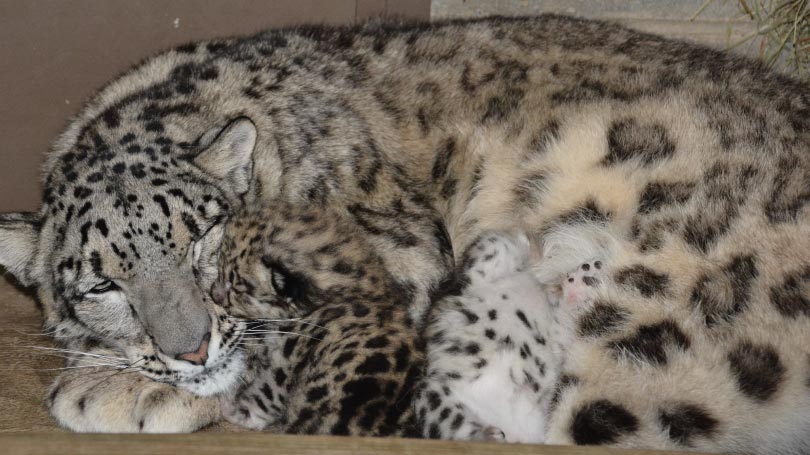
Snow Leopards Born at the Zoo since 2016
The Metro Richmond Zoo participates with the Association of Zoos and Aquariums’ (AZA) species survival plan (SSP) for Snow leopards.
SNOW LEOPARD
Status: Endangered (ESA)
Range: Central & Southeast Asia
Gestation: 3 1/2 months
Weight: 75-150 pounds
Estimated Wild Snow Leopard Population Today
Snow leopard population estimates are difficult because of the leopard’s elusiveness which has earned them the nickname of “ghosts of the mountains” by natives. Best estimates place the wild population between 3,000 and 6,000.
RETICULATED GIRAFFE
Status: Endangered (IUCN)
Range: Horn of Africa
Gestation: 15 months
Weight: Up to 4,000 pounds
Estimated Wild Reticulated Giraffe Population Today
%
Population Decline over the last 30 Years
The giraffe’s population decline is attributed mainly to habitat loss, civil unrest, and illegal hunting.
Giraffes Born at the Zoo since 2000
In 2022, the Metro Richmond Zoo hosted a 5K race, and proceeds were donated to the Giraffe Conservation Foundation
In 2022, the Metro Richmond Zoo hosted a 5K race, and proceeds were donated to the Giraffe Conservation Foundation
CONSERVATION RACES
Since 2020, the Metro Richmond Zoo hosts Run Wild Races twice a year. Proceeds from the event support animal conservation efforts.
So far, the event has raised money for Cheetah Conservation Fund, Cheetah Conservation Botswana, Dyer Island Conservation Trust, SANCCOB, The Orangutan Project, The Orangutan Conservacy, Giraffe Conservation Fund, and The Aspinall Foundation Africa.
